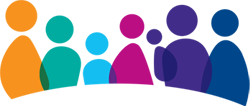Find out more about the Learning Disability Community Speech and Language Therapy Service in the Black Country and helpful resources to support people with their speech and language needs.
Communication Passport
Communication passports are person-centred ‘books’ for individuals who have communication issues. A communication passport is a document that gives an overview about the person's likes, dislikes, how they communicate and how best to communicate with them. It can also contain additional pages that can be updated like “my news” or “what I did at the weekend”.
A communication passport should contain pictures, photos or symbols so that it is accessible to the client and can be used as a conversation starter for them too. This resource should be available to the client/staff when they want it (e.g. in their bag) so that they can retrieve it easily.
A communication passport can also be used as a social tool as a conversation starter or a resource to facilitate communication, for example as a joint point of interest that people are communicating about.
Visual Schedule - Now and Next
A visual schedule is a tool that gives information about what is happening, the sequence of events, what changes may be occurring, or when it is time to stop an activity and move on to another. A traditional “Now and Next” visual schedule has ‘Now’ on the left-hand side and ‘Next’ on the right-hand side, with a space to add a symbol or photograph.
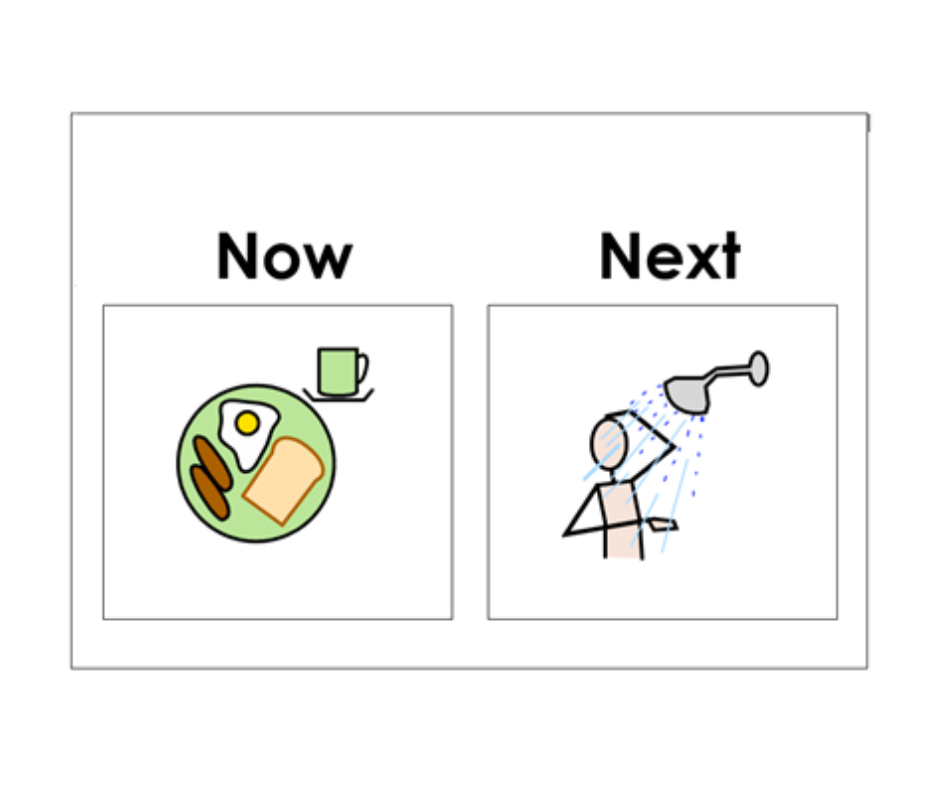
Visual Schedule - Daily or Weekly
A visual schedule is a tool that gives information about what is happening, the sequence of events, what changes may be occurring, or when it is time to stop an activity and move on to another task. These can be spread over different periods of time depending on what works best for the client, for example a day could be broken down into smaller parts or a form a weekly schedule.
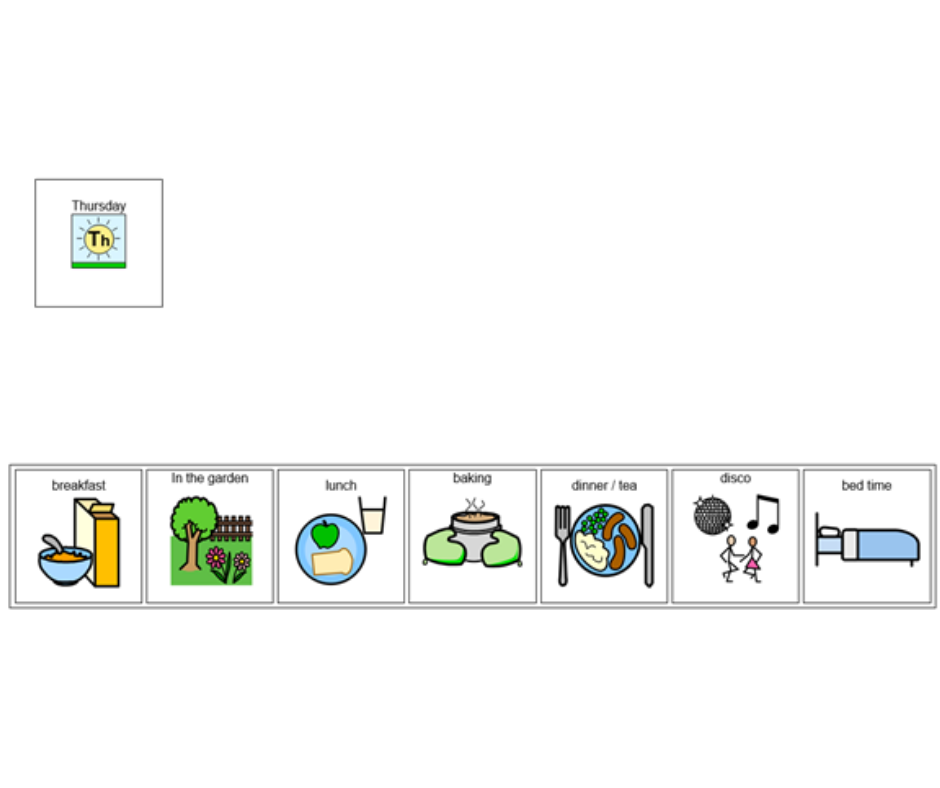
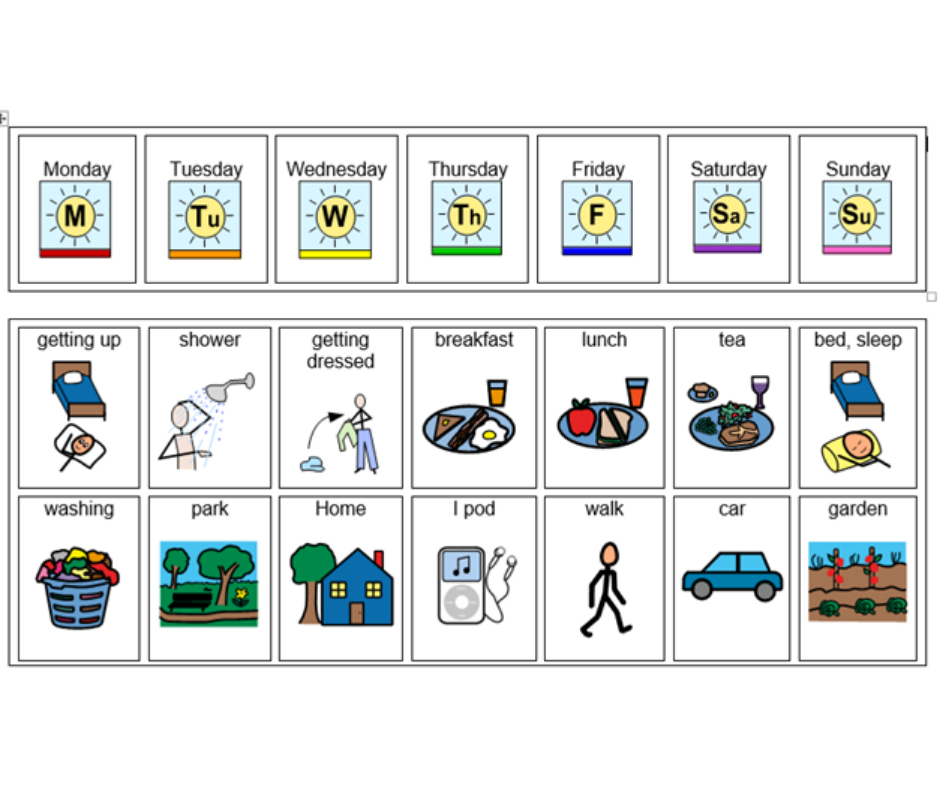
Choice making boards
Choice making boards or cards can be used to give someone the vocabulary and freedom to make choices about everyday decisions, such as where to go or what to have to eat. This could be done with symbols or photographs. The amount of choices you offer will need to be adapted depending on the client, for example some clients can only cope with two different choices, otherwise they could become overwhelmed.
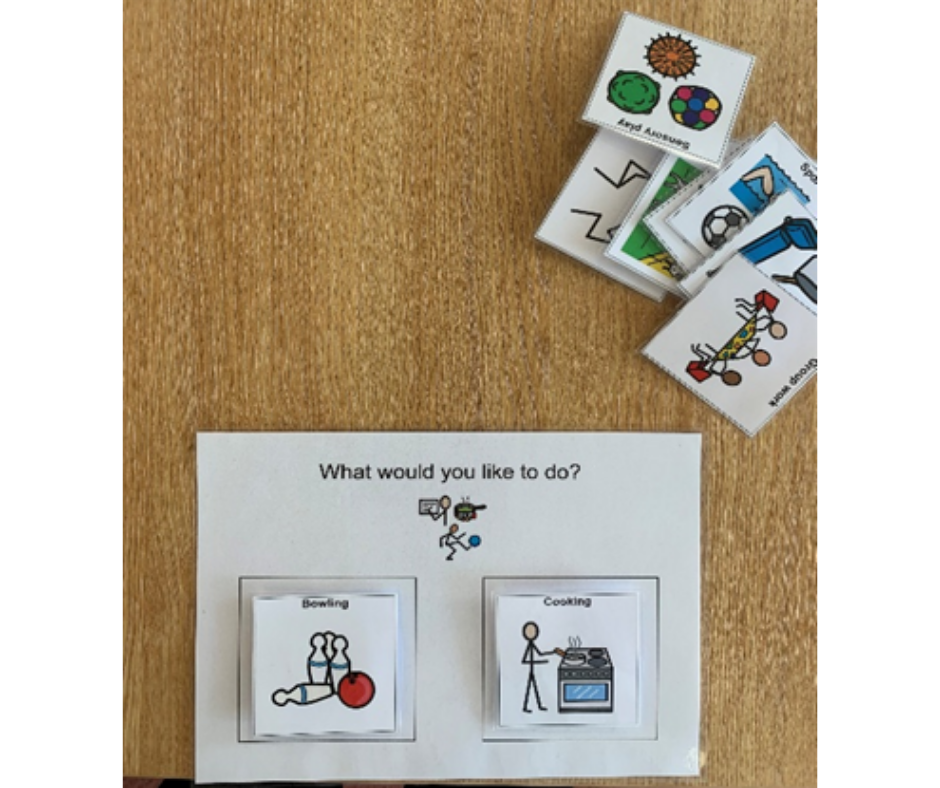
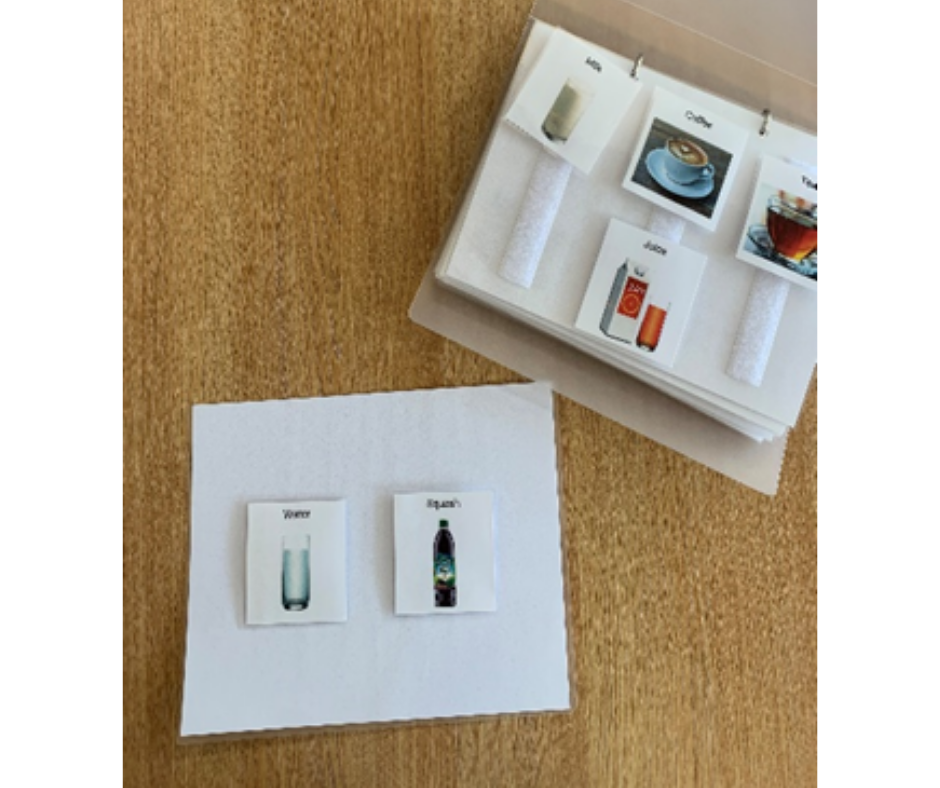
Alphabet charts
An alphabet chart can provide a quick way of communicating for individuals who are able to spell. Even if a client cannot spell words correctly, even selecting some of the letters or sounds a word starts with can help to provide their communication partner with some context.
The size and layout of the alphabet chart can be adapted depending on the client. For clients who are familiar with technology and keyboards, a QWERTY layout can be more effective.
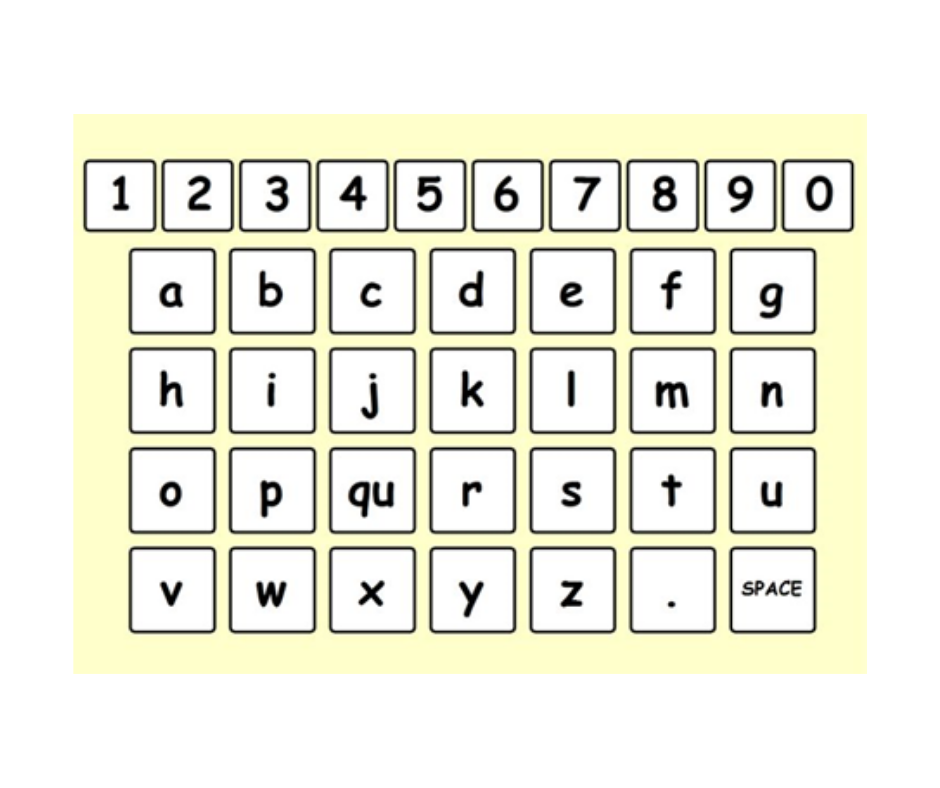
Choice Making - Yes and No using hands
Assigning choices or Yes and No to a left and right hand can be a very effective and quick means of capturing someone’s choices or opinions ‘in the moment’ with no resources required. Using this method is also very useful with clients who use eye pointing or eye gaze.
• Establish with the client the vocabulary you are assigning to each hand, for example left for yes, right for no.
• Ask them the question or sentence stating the choice they can make
• Wait for a response from the client
• Check with the client that you have understood their choice correctly
• Remember: If the client has an unreliable 'yes/ no' this system may not be effective!
Top tip: The better the partner and the AAC user know each other the more successful this is likely to be, but even at a very early stage of getting to know one another and hold conversations it can be useful.
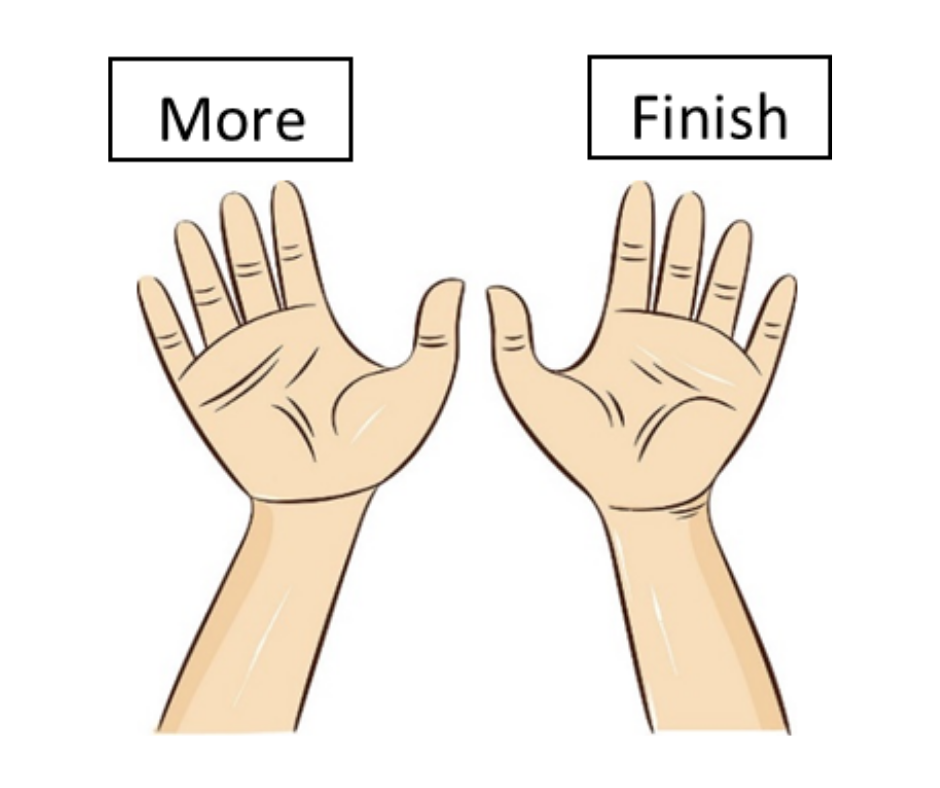
Communication Boards - Expressing Pain/Body Maps
An ‘Expressing pain’ communication board is a page of body or illness related vocabulary, presented as symbols, pictures or photos that a client can use to support them to express if they are experiencing pain or feeling unwell.
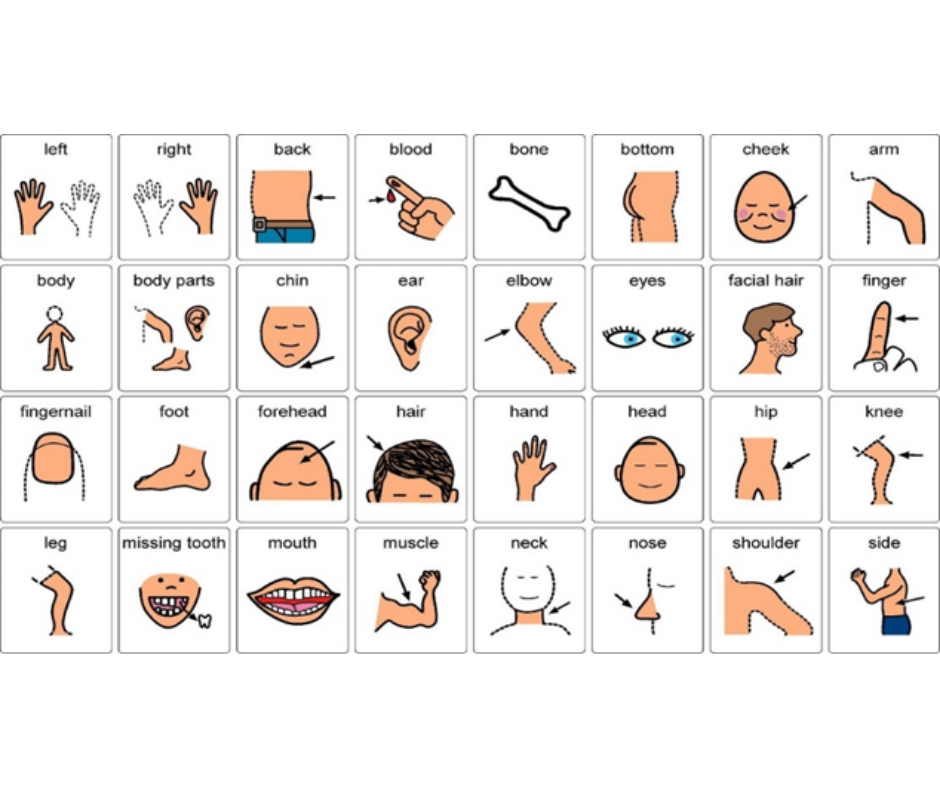
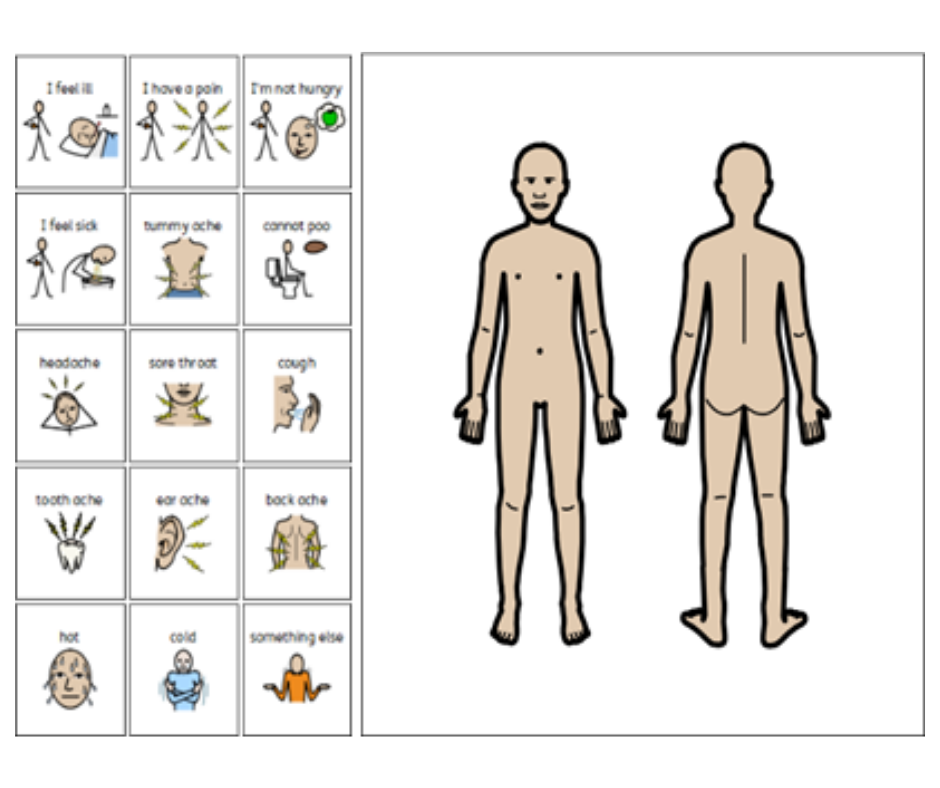
Health Passports
'My Health Passport' is a useful document containing information about a client regarding their health, difficulties, their skills and their likes/dislikes. This document is particularly useful when a patient goes into hospital or has a medical appointment as it is helpful for staff to have information readily available.
Here is an example of a health passport.
Contact Us
Wolverhampton
44 Pond Lane,
Parkfields,
Wolverhampton
WV2 1HG
Telephone: 01902 444447
Dudley
The Ridge Hill Centre
Brierley Hill Road
Nr. Stourbridge
West Midlands
DY8 5ST
Telephone: 01384 324 700
Sandwell
Quayside House
Rounds Green Road
Oldbury
B69 2DG
Telephone: 0121 543 4287
Walsall
Orchard Hills House
Fallowfield Road
Walsall
WS5 3DY
Telephone: 01922 658 800

